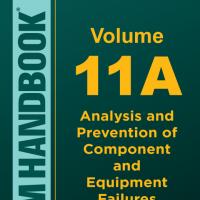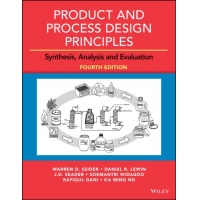by
Cost Accounting with Integrated Data Analytics takes the approach that you need to reach students in order to engage and effectively teach them to make meaning of costing concepts. Through storytelling, students develop a deeper understanding of cost accounting fundamentals, allowing them to apply their knowledge to modern business scenarios and develop the competencies and decision-making skills needed to become the future accounting professional.
Throughout Cost Accounting, students also work through a variety of data analysis applications that allow them to develop their decision-making skills within real-world contexts. Through assignments and integrated cases that leverage market-leading technology, students learn how to make informed business decisions and think critically about data.
Publisher : Wiley; 1st edition (February 8, 2022)
Language : English
Loose Leaf : 880 pages
ISBN-10 : 1119731860
ISBN-13 : 978-1119731863
1 Cost Accounting Has Purpose 1-1
1.1 Companies Know Their Purpose: Do You Know Yours? 1-2
Purpose Is Meaningful 1-2
Company Strategy: Turning Purpose into Action 1-2
Your Own Strategy 1-4
Measures, Targets, and Results on the Balanced Scorecard 1-5
1.2 The Purpose of Cost Accounting 1-9
Data Analytics in Action: Data Analytics Isn’t New 1-9
Big Picture Thinking and Decision-Making 1-10
Using Data Analytics to Problem-Solve 1-14
Data Analytics in Action: Keeping Score 1-14
The Value Chain 1-15
1.3 What Guides Our Purpose? 1-17
The Importance of Ethics in Business 1-17
Governing Bodies Within Accounting 1-18
Appendix 1A: Why You Should Learn to Learn 1-23
Your Role as a Lifelong Learner 1-23
Fixed versus Growth Mindset 1-23
Purposeful Pedagogy 1-24
How This Text Can Help You Learn 1-25
Data Analytics Activities 1-35
2 Refresher on Cost Terms 2-1
2.1 Overview of Costs 2-2
Using Financial Statements to Interpret Revenues and Expenses 2-2
Costs versus Expenses: Let’s Get Specific 2-3
Opportunity Costs and Sunk Costs 2-4
2.2 Costs for Service Providers, Merchandisers, and Manufacturers 2-7
Service Providers 2-7
Data Analytics in Action: Cutting Corners 2-8
Merchandisers 2-8
Manufacturers 2-10
2.3 Defining and Assigning Costs 2-11
Product and Period Costs 2-12
Manufacturing and Nonmanufacturing Costs 2-12
The Cost Object, Direct Costs, and Indirect Costs 2-14
Prime Costs and Conversion Costs 2-15
2.4 Variable and Fixed Costs and the Relevant Range 2-16
Variable Costs 2-16
Managing Variable Costs 2-17
Data Analytics in Action: It’s a Snap! 2-17
Fixed Costs 2-17
Managing Fixed Costs 2-18
Relevant Range and Costs of Capacity 2-19
Fixed Costs on a Per-Unit Basis: Be Careful 2-20
2.5 Tracing Product Costs from the Balance Sheet to the Income Statement 2-21
Inventoriable Costs 2-22
Raw Materials Inventory on the Balance Sheet 2-22
Work-in-Process Inventory on the Balance Sheet 2-23
Finished Goods Inventory on the Balance Sheet 2-24
Cost of Goods Manufactured 2-25
Cost of Goods Sold 2-26
2.6 Comparing Gross Margin and Contribution Margin Income Statements 2-28
Gross Margin versus Contribution Margin 2-28
Full Costs 2-30
Data Analytics Activities 2-49
3 Cost Behavior and Cost Estimation 3-1
3.1 The Basics of Cost Behavior 3-2
Selecting Cost Drivers 3-2
Data Analytics in Action: Counting Cars 3-2
The Relevant Range, and Costs Within It 3-3
3.2 Estimating Costs Is Crucial: Here’s How 3-9
Account Analysis Method 3-9
High-Low Method 3-10
Data Analytics in Action: Scatter to Avoid Slacking? 3-12
Excel Tutorial: The Scatter Plot 3-12
3.3 Sophisticated Cost Estimation with Regression 3-15
Overview of the Regression Method 3-15
Excel Tutorial: Regression Analysis 3-17
Evaluating Regression Output 3-21
Assumptions of Regression 3-23
Multiple Regression 3-25
3.4 When Costs Are Nonlinear: The Learning Curve 3-29
Applying the Learning Curve 3-30
Learning Curve Impacts on Costs and Prices 3-31
Data Analytics Activities 3-54
4 Cost-Volume-Profit Analysis 4-1
4.1 Contribution Margin and the Break-Even Sales Point 4-2
Data Analytics in Action: Consuming Coffee and Trends 4-2
Contribution Margin 4-2
Numbers of Sales in Units to Break Even 4-4
Sales in Dollars to Break Even 4-5
What Happens After Break-Even Analysis? 4-6
4.2 Cost-Volume-Profit (CVP) Analysis 4-8
It’s Graphic: Understanding CVP Relationships 4-9
The Relevant Range: Quite Relevant 4-10
Margin of Safety 4-10
4.3 Break-Even with Target Profit and Taxes 4-12
Modifying the Break-Even to Include Target Profit 4-12
Modifying the Break-Even to Include Target Profit After[1]Tax 4-13
4.4 Break-Even with Multiple Products 4-14
Data Analytics in Action: Big Data for Bigger Sales 4-15
4.5 Operating Leverage and Sensitivity Analysis 4-17
Sensitivity Analysis Shows the Effects of Operating Leverage 4-17
Using the Degree of Operating Leverage Multiplier 4-18
4.6 CVP Analysis for Service and Nonprofit Organizations 4-21
Data Analytics in Action: More Service, Fewer Costs 4-21
Data Analytics Activities 4-35
5 Relevant Costs for the Decision[1]Maker 5-1
5.1 Decision-Making Made Easier 5-2
Data Analytics in Action: Don’t Succumb to Analysis Paralysis 5-2
5.2 What Are Relevant Costs and Relevant Information? 5-4
How Relevant Information Supports Decision-Making 5-4
Sunk Costs 5-5
The Total Cost Approach versus the Relevant Cost Approach 5-6
5.3 Management Decisions Requiring Use of Relevant Costs 5-7
Insource versus Outsource 5-7
Keep versus Drop 5-11
Excel Tutorial: Goal Seek 5-12
Product-Mix Decisions 5-14
Data Analytics in Action: Tasty, Fast, or Both? 5-15
Excel Tutorial: Solver 5-17
Special Orders 5-20
5.4 Decision-Making and Opportunity Costs 5-22
5.5 Fixed Costs and Decision-Making 5-25
Direct Fixed Costs 5-25
Common Fixed Costs 5-26
Allocated Fixed Costs 5-27
Data Analytics Activities 5-44
6 Mastering the Master Budget 6-1
6.1 Why Budget? 6-2
Budgeting and Behavior Modification 6-2
Data Analytics in Action: Budgeting Made Fun? 6-2
Types of Budgets 6-3
Budgeting and Ethical Considerations 6-5
6.2 The Master Budget 6-7
Revisiting the Strategic Planning Process 6-7
Organizational Structure and Responsibility Centers 6-8
The Master Budget Inputs and Outputs 6-10
Follow-Up and Feedback 6-11
6.3 The Operating Budget and the Budgeted Income Statement 6-12
Sales Forecast: It All Starts Here 6-13
Production Budget 6-14
Direct Materials Purchases Budget 6-16
Direct Labor Budget 6-17
Manufacturing Overhead Budget 6-18
Cost of Goods Sold and Cost of Goods Manufactured Budgets 6-20
Selling, General, and Administrative Expenses Budget 6-21
Non-Operating Expenses Budget 6-23
6.4 The Financial Budget and the Budgeted Balance Sheet 6-24
Budgeted Inventory Balance 6-25
Cash Receipts, Cash Collections, and the Budgeted Accounts Receivable Balance 6-26
Data Analytics in Action: Banks Expedite Loan Collections 6-27
Cash Disbursements and Budgeted Accounts Payable Balance 6-29
Budgeted Cash Balance 6-31
6.5 Budgeting in Retail and Service Organizations 6-35
Budgeting for Retailers 6-35
Budgeting for Service Providers and Nonprofit Organizations 6-36
Data Analytics Activities 6-57
7 Capital Budgeting Choices and Decisions 7-1
7.1 Capital Budgeting: The Point and the Context 7-2
Data Analytics in Action: Using Data to Scout a Location 7-2
The Circle of Life of Businesses 7-2
Return on Investment (ROI) 7-4
7.2 Elements of Capital Budgeting Decisions 7-6
Timeliness 7-6
Time Value of Money 7-7
Cash Flows: Lump Sums and Annuities 7-9
Discount Rate 7-13
Tax Rate 7-14
Depreciation Tax Shield: Yes You Can! 7-15
Data Analytics in Action: Data Informs Decision[1]Making 7-15
7.3 Tools to Evaluate Capital Budgeting Choices 7-17
Net Present Value (NPV): A Powerful Machine 7-17
Internal Rate of Return (IRR) 7-20
Payback Period 7-22
Accounting Rate of Return (ARR) 7-24
Profitability Index 7-25
7.4 Sensitivity Analysis 7-27
7.5 Making the Decision 7-29
7.6 The Follow-Up 7-33
Post-Investment Audit 7-33
Performance Evaluation 7-33
Data Analytics Activities 7-50
Time Value of Money Tables 7-52
8 Job Costing Visualized 8-1
8.1 Job Costing: An Overview 8-2
Defining Jobs and Job Costing 8-2
Revisiting Product Costs 8-2
Actual versus Normal Costing 8-4
Data Analytics in Action: Is It Hot in Here? 8-4
How Job Costing Is Organized 8-6
8.2 Actual and Applied Manufacturing Overhead 8-10
Accounting for Actual and Applied Manufacturing Overhead 8-10
Calculating Applied Manufacturing Overhead 8-12
Budgeting Manufacturing Overhead for a Specific Job 8-13
8.3 Putting It Together: Costing Jobs and Units 8-15
Cost Flows, Accounts, and Journal Entries 8-16
Year-End Adjustments 8-22
Income Statement Impacts of Job Costing 8-23
8.4 Job Costing and Decision-Making 8-26
Job Costing’s Impacts on Decision 8-26
Data Analytics in Action: Information or Invasion? 8-26
Ethical Considerations Related to Job Costing 8-27
8.5 Job Costing in Service Organizations 8-30
Data Analytics Activities 8-51
9 Activity-Based Costing 9-1
9.1 Traditional Job Costing and ABC Compared 9-1
Drawbacks of Traditional Costing 9-2
The Advantage of Activity-Based Costing 9-3
A Better Cost with Activity-Based Costing 9-4
Data Analytics in Action: A Sweet Outcome 9-5
9.2 The Cost Hierarchy, Activities, and Cost Drivers 9-7
Identifying Activities as Cost Pools 9-7
Cost Drivers 9-9
The Cost Hierarchy 9-10
9.3 Using Activity-Based Costing for Product Costing 9-13
Step 1: Identify Direct Costs 9-14
Step 2: Identify Activities and Cost Drivers 9-15
Step 3: Calculate Cost Driver Rates and Assign MOH 9-15
Step 4: Record MOH Costs 9-16
9.4 Decision-Making Outcomes, Including Time-Driven Activity-Based Costing (TDABC) 9-19
Impacts of Activity-Based Costing on Product and Service Costs 9-19
Who Should Use Activity-Based Costing? 9-19
Broader Outcomes of Using Activity-Based Costing 9-21
Time-Driven Activity-Based Costing: A Time-Saving Alternative 9-22
Data Analytics in Action: An Impressive By[1]Product 9-24
Data Analytics Activities 9-43
10 Variance Analysis and Standard Costing 10-1
10.1 A Variety of Purposes for Budgets and Variance Analysis 10-2
Motivate and Benchmark 10-2
Plan and Control 10-3
Evaluate Performance and Troubleshoot 10-4
Data Analytics in Action: Process Improvements at Nike 10-4
10.2 Master Budget and Flexible Budget Variances 10-6
Limitations of the Master Budget 10-6
The Flexible Budget 10-7
10.3 Standard Costing 10-11
The Purpose of Standard Costing 10-11
Setting and Updating Standards 10-13
Data Analytics in Action: A New Way of Checking Out the Competition 10-13
10.4 Direct Materials and Direct Labor Variances 10-15
Overview of Production Variances 10-16
Direct Materials Variances 10-17
Direct Labor Variances 10-22
10.5 Variable-MOH and Fixed-MOH with Journal Entries 10-24
Variable-MOH: Price and Efficiency Variances 10-24
Data Analytics in Action: Calculate All the Variances 10-24
Fixed-MOH: Price and Volume Variances 10-26
Journal Entries to Close Variances 10-28
10.6 Sales Variances 10-31
Master Budget Sales Variances: Sales Price Variance and Simplified Sales Activity Variance 10-31
Comprehensive Sales Activity Variance: Sales Mix Variance and Sales Quantity Variance 10-33
Sales Quantity Variance: Market Size Variance and Market Share 10-38
11 Process Costing 11-1
11.1 Process Costing: An Overview 11-2
Data Analytics in Action: Mining Data for Mining Real 11-3
Job Costing versus Process Costing 11-3
The Importance of Determining WIP Inventory Correctly 11-4
The Steps of Process Costing 11-5
11.2 Step 1: Verify Physical Units in the Period and Identify Degree of Completion 11-7
No Beginning or Ending WIP Inventory 11-7
With Only Ending WIP Inventory 11-8
With Beginning and Ending WIP Inventory 11-8
11.3 Step 2: Determine Status of Physical Units and Convert to Equivalent Units 11-13
Using the FIFO Method to Determine Status of Physical Units 11-14
Using the Weighted-Average Method to Determine Status of Physical Units 11-15
11.4 Steps 3 and 4: Account for Costs and Calculate Cost per Equivalent Unit 11-17
Using the FIFO Method to Calculate Cost per Equivalent Unit 11-18
Using the Weighted-Average Method to Calculate Cost per Equivalent Unit 11-18
11.5 Step 5: Assign Costs to WIP Inventory and FG Inventory with Journal Entries 11-21
Assigning Costs Using the FIFO Method with Corresponding Journal Entries 11-22
Assigning Costs Using the Weighted-Average Method with Corresponding Journal Entries 11-24
Applications of Determining Product Costs 11-25
11.6 Costs Transferred-In from Another Department 11-26
Transferred-In Costs Using the FIFO Method 11-26
Transferred-In Costs Using the Weighted-Average Method 11-29
11.7 Operation Costing 11-31
Data Analytics Activities 11-51
12 Absorption versus Variable Costing 12-1
12.1 Absorption Costing: An Overview 12-2
The Purpose of Absorption Costing and How It Works 12-3
Management Decision-Making and Absorption Costing 12-6
Data Analytics in Action: This Machine Is Learning! 12-7
Balance Sheet and Income Statement Impacts of Absorption Costing 12-8
12.2 Variable Costing: An Overview 12-10
The Purpose of Variable Costing and How It Works 12-10
Balance Sheet and Income Statement Impacts of Variable Costing 12-11
12.3 Side-by-Side: Comparing Absorption Costing and Variable Costing 12-13
The Two Methods Compared: Inventory Costs and Balance Sheet Impacts 12-13
The Two Methods Compared: COGS, Operating Income, and Income Statement Impacts 12-14
12.4 Determining Denominator Volumes for Fixed[1]MOH 12-17
Managing Capacity 12-18
Denominator Volume Choices 12-18
Further Outcomes of Denominator Decisions 12-20
13 Data Analytics 13-1
13.1 Big Data? Data Analytics? Challenges and Opportunities 13-2
Overview of Data 13-2
Big Data and Data Analytics in Cost Accounting 13-3
Challenges and Opportunities 13-3
Data Analytics in Action: Meeting the Challenges 13-4
13.2 Sourcing and Storing Data 13-6
The Role of Data Analytics in Decision-Making 13-6
Data Sources and Data Storage 13-7
The Cost of Data and Its Ethical Considerations 13-10
Data Analytics in Action: When Data Is Especially Costly 13-11
13.3 Categories of Data Analytics Techniques 13-13
Overview of Data Analytics Categories 13-14
Descriptive Analytics 13-15
Diagnostic Analytics 13-18
Predictive Analytics 13-19
Prescriptive Analytics 13-20
Data Analytics in Action: Price Check on Aisle 3 13-20
13.4 Your Role in Solving Business Problems with Data Analytics 13-23
Data Analytics Outcomes in Cost Accounting 13-23
Being Career-Ready 13-25
14 Support Department Costing 14-1
14.1 Support Department Costing: An Overview 14-1
Types of Support Departments and Their Costs 14-2
Allocating Support Department Costs 14-4
Data Analytics in Action: Keep or Drop? 14-5
Cost Allocation Bases for Support Departments 14-6
14.2 Methods of Allocating Support Department Costs 14-8
The Direct Method Illustrated 14-8
Step Method Illustrated 14-10
Reciprocal Method Illustrated 14-12
Excel Tutorial: The Reciprocal Method 14-13
Comparing the Three Methods 14-16
Data Analytics in Action: This Call May Be Analyzed 14-16
14.3 Allocating Common Costs and Bundled Revenues 14-20
Stand-Alone Cost Allocation Method 14-20
Incremental Cost Allocation Method 14-21
Allocating Revenue from Sales of Bundled Products/Services 14-22
15 Joint Costs and Decision[1]Making 15-1
15.1 Joint Costs: Description and Illustration 15-2
15.2 Methods of Allocating Joint Costs 15-4
Sales Value at Split-Off Method 15-4
Net Realizable Value (NRV) Method 15-5
Physical Quantities Method 15-6
Choosing an Allocation Method 15-8
15.3 Joint Costs and Decision-Making: Should We Sell or Process Further? 15-10
Relevance of Joint Costs to Sell-or-Process-Further Decisions 15-10
Sell-or-Process-Further Decision Factors 15-10
Data Analytics in Action: More Fresh Options 15-11
Decision-Making and Performance Evaluation 15-12
15.4 A Decision: How Should We Account for By-Product and Scrap? 15-13
By-Products Revisited 15-13
Data Analytics in Action: Analysis Reduces Waste 15-14
The Production Method 15-14
The Sales Method: By-Products and Scrap Recognized at Time of Sale 15-17
Production Method versus Sales Method 15-19
16 The Art and Science of Pricing to Optimize Revenue 16-1
16.1 Pricing: Art + Science + Psychology 16-2
Truths About Pricing 16-2
Consider the Context: Customers, Costs, and Competitors 16-3
16.2 Special-Order Pricing: Be Opportunistic 16-5
Lowest Acceptable Special-Order Price 16-6
Relationship to Relevant Costs for the Decision[1]Maker 16-7
16.3 Cost-Plus Pricing: If You Can Sell the Plus, Charge It 16-9
Overview of the Cost-Plus Method 16-10
The Calculation: A Starting Point 16-10
Data Analytics in Action: Using Data to Set Prices 16-10
Comparing Special-Order Pricing to Cost-Plus Pricing 16-13
16.4 Target Costing for Target Pricing—Backward but Brilliant 16-14
Steps to Implement Target Costing for Target Pricing 16-15
The Value in Value Engineering 16-16
Data Analytics in Action: Ensuring the Value of Business Activities 16-16
16.5 Consumers and Pricing Practices 16-17
Consumer Perceptions and Pricing 16-17
Other Pricing Practices: Fair or Illegal? 16-18
Data Analytics in Action: No Free Parking 16-19
Data Analytics Activities 16-33
17 Management Control Systems and Transfer Pricing 17-1
17.1 The Need for an Effective Management Control System 17-2
Centralized versus Decentralized Organizations 17-2
Goal Congruence 17-4
Components of a Management Control System 17-5
17.2 How Responsibility Centers Work 17-6
Characteristics of Responsibility Centers 17-6
Cost Centers 17-8
Revenue Centers 17-9
Profit Centers 17-10
Investment Centers 17-10
Data Analytics in Action: Major League Baseball Invests in Data 17-11
17.3 How to Measure Performance of Investment Centers 17-13
Return on Investment and Its Components 17-13
Residual Income (RI) 17-16
Economic Value Added (EVA®) 17-16
17.4 Transfer Pricing: An Overview 17-18
The Genesis of Transfer Pricing 17-19
Determining the Optimal Transfer Price Range 17-21
How Companies Set Transfer Prices 17-23
Management and Transfer Pricing 17-27
Transfer Pricing in Multinational Companies 17-28
18 Business Strategy, Performance Measurement, and the Balanced Scorecard 18-1
18.1 An Overview of Business Strategy 18-1
The Strategic Planning Process 18-2
A Closer Look at Business Strategy 18-3
18.2 Performance Measurement Guides Performance 18-8
Congruent Outcomes: Linking Business Strategy to Employees’ Objectives 18-8
The Performance Measurement Process 18-9
Traits of Financial Performance Measures 18-12
Traits of Nonfinancial Performance Measures 18-13
18.3 Using the Balanced Scorecard to Assess Company Performance 18-15
Balancing the Four Perspectives 18-16
Linking Business Strategy to the Balanced Scorecard 18-17
Data Analytics in Action: New Measures and Targets 18-18
Evaluating Success 18-20
Company Index I-1
Subject Index I-0
Key Formulas Review K-
![]()
1、本站所有分享材料(数据、资料)均为网友上传,如有侵犯您的任何权利,请您第一时间通过微信(lib99net)、QQ(24661067)、电话(17898078618)联系本站,本站将在24小时内回复您的诉求!谢谢!
2、本站所有商品,除特殊说明外,均为(电子版)Ebook,请购买分享内容前请务必注意。特殊商品有说明实物的,按照说明为准。
![]()

![]()
1、自动:在上方保障服务中标有自动发货的宝贝,拍下后,将会自动收到来自卖家的宝贝获取(下载)链接;
2、手动:未标有自动发货的的宝贝,拍下后,卖家会收到邮件、短信提醒,也可通过QQ或订单中的电话联系对方。
![]()
1、描述:书籍描述(含标题)与实际不一致的(例:描述PDF,实际为epub、缺页少页、版本不符等);
2、链接:部分图书会给出链接,直接链接到官网或者其他站点,以便于提示,如与给出不符等;
3、发货:手动发货书籍,在卖家未发货前,已申请退款的;
4、其他:如质量方面的硬性常规问题等。
注:经核实符合上述任一,均支持退款,但卖家予以积极解决问题则除外。交易中的商品,卖家无法对描述进行修改!
![]()
1、在未购买下前,双方在QQ上所商定的内容,亦可成为纠纷评判依据(商定与描述冲突时,商定为准);
2、在宝贝同时有网站演示与图片演示,且站演与图演不一致时,默认按图演作为纠纷评判依据(特别声明或有商定除外);
3、在没有"无任何正当退款依据"的前提下,写有"一旦售出,概不支持退款"等类似的声明,视为无效声明;
4、虽然交易产生纠纷的几率很小,但请尽量保留如聊天记录这样的重要信息,以防产生纠纷时便于网站工作人员介入快速处理。



 人工在线查找书籍,不要问我们有什么,告诉我们您需要什么即可...¥1.00
人工在线查找书籍,不要问我们有什么,告诉我们您需要什么即可...¥1.00 【PPT】Linear Algebra and Its Applica...¥0.1
【PPT】Linear Algebra and Its Applica...¥0.1 Delay-Adaptive Linear Control by Ya...¥29.99
Delay-Adaptive Linear Control by Ya...¥29.99 Handbook of Organic Materials for E...¥19.99
Handbook of Organic Materials for E...¥19.99 FinFET Devices for VLSI Circuits an...¥29.99
FinFET Devices for VLSI Circuits an...¥29.99 Positron Beams and Their Applications¥29.99
Positron Beams and Their Applications¥29.99 ASM Handbook Volume 11A Analysis an...¥420.00
ASM Handbook Volume 11A Analysis an...¥420.00 PETSc for Partial Differential Equa...¥29.99
PETSc for Partial Differential Equa...¥29.99 无机非金属材料热工设备-作 者 : 姜洪舟主编 2015第5版...¥14.99
无机非金属材料热工设备-作 者 : 姜洪舟主编 2015第5版...¥14.99 Product and Process Design Principl...¥9.99
Product and Process Design Principl...¥9.99